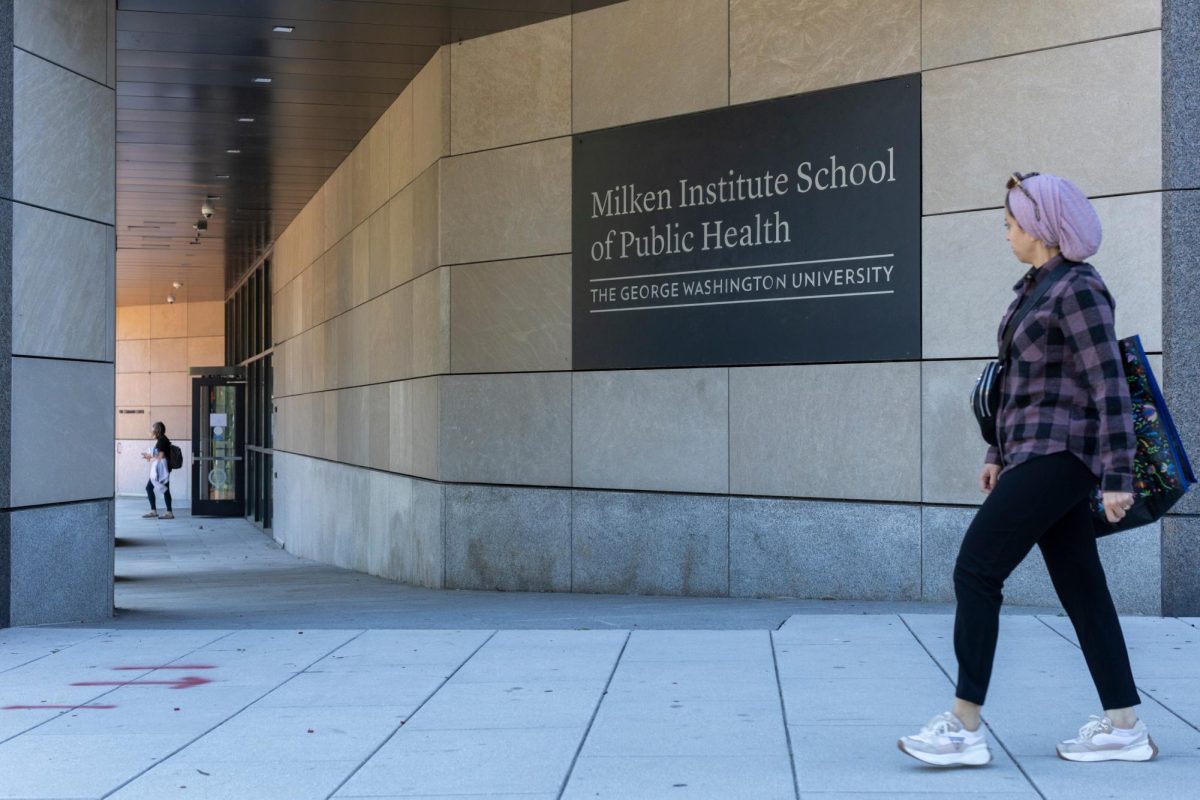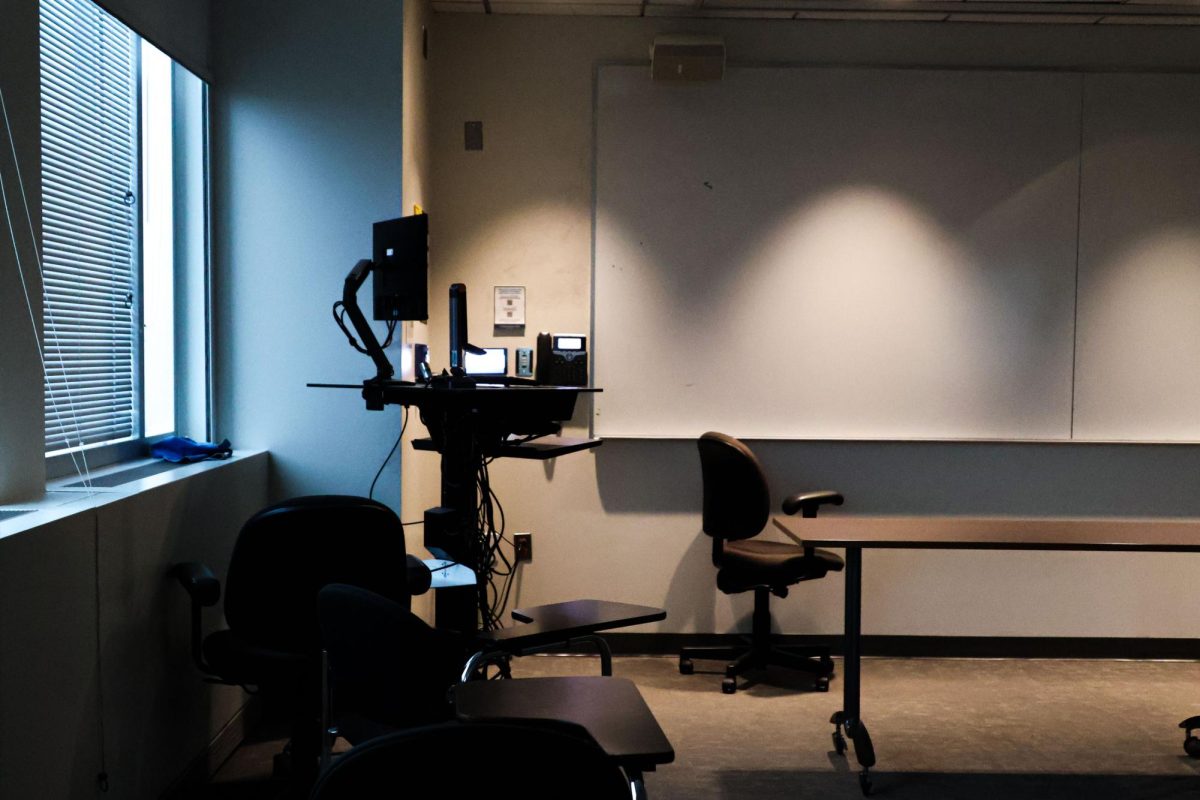Researchers at the Milken Institute School of Public Health found that Black and Latino family physicians are more likely to treat patients with Medicaid than their white and Asian counterparts in a study published last month.
The study — led by Anushree Vichare, an assistant professor in the Department of Health Policy and Management at Milken — found that 52 percent of family physicians participate in Medicaid, and Latino and Black doctors saw on average 17 percent to 21 percent more Medicaid beneficiaries than white and Asian doctors. Vichare said the study aimed to understand the role of family medicine in caring for minority populations.
“My interest is primarily around improving access to care for minoritized communities and those that are socioeconomically disadvantaged, such as individuals that are covered by Medicaid,” Vichare said.
Medicaid is a program that combines efforts by federal and state governments to provide health coverage to individuals with limited income and resources. It primarily serves women, children, people from low-income socioeconomic backgrounds and people of color, according to 2023 Medicaid patient data.
The study determined that there is a correlation between physician race and ethnicity and Medicaid participation. Vichare said since Medicaid populations are diverse, language, ethnic and racial similarities between physicians and their patients — as well as diversity within the family physician profession — are beneficial in the primary care setting and in expanding access to health care.
“There is robust evidence suggesting that improving the diversity of the workforce and having a health workforce that is representative of the diversity of our nation is extremely important, and we know that there is a lack of diversity,” Vichare said.
Recent studies have shown that patients whose doctors share the same language, race or ethnic background experience better health outcomes. Vichare said a shared cultural identity between a patient and a doctor fosters trust and healthy patient-provider relationships.
“It has shown to improve patient-provider communication and led to stronger patient-clinician relationship, improved patient experiences of care and led to positive primary care outcomes,” Vichare said.
In the 2022-23 academic year, 10 percent of medical school students across the country were Black and 12 percent were Latino. The study highlights the significance of having a diverse health care workforce, particularly in the context of ongoing challenges to minority representation in the field, like decreased enrollment in medical school due to financial hardship.
“It’s also essential to ensure that underrepresented in medicine students are not only recruited or given fair opportunities to get recruited in the health profession, but they should also receive equal opportunities for professional growth and to thrive in the medical profession,” said Vichare.
The study analyzed 2016 Medicaid claims data from the Transformed Medicaid Statistical Information System, paired with responses from a 2016-17 American Board of Family Medicine physician certification questionnaire to determine family physicians’ demographics and Medicaid participation.
Andrew Bazemore, the senior vice president for research and policy at the American Board of Family Medicine and one of the study’s contributors, said the data allowed researchers to pair physicians with the Medicaid beneficiaries they were treating and let them observe the demographics of patients and physicians.
“We can link these unique data that include, thanks to our physician respondents, physician race and ethnicity and a lot of survey responses to a 2016 TMSIS or nationwide combined Medicaid claim set and start to look at which family physicians of which backgrounds personal characteristics, characteristics of their practice, etcetera are caring for which Medicaid patients and populations,” Bazemore said.
Bazemore said the consolidation of the health care system and increasing scarcity of health care access due to rising costs have made it increasingly difficult for Medicaid beneficiaries to receive primary care since 2016 when the data was collected. He said these “acute” problems in accessing health care services in recent years will have likely caused greater disparities in the ability of Medicaid beneficiaries to find primary care in 2024 than was evident in 2016.
“Obviously, the Medicaid programs continue to expand, and that’s at a rate that hasn’t been matched by the expansion of family doctors,” Bazemore said.
Experts in health policy said a diverse health care workforce is necessary to ensure patients of all backgrounds get the same quality of care.
Darrell Gaskin, the director of the Hopkins Center for Health Disparities Solutions, said the recent U.S. Supreme Court decision on affirmative action — which ended the practice of colleges considering race in admissions — will likely expand the gaps between Medicaid beneficiaries and health care by reducing the amount of racial minorities going to medical school.
“The recent Supreme Court decision with regard to affirmative action has created an environment that really harms our ability to promote health equity,” Gaskin said.
Gaskin said that Black and Latino physicians are already facing the new barriers posed by medical schools schools, like his own seeing fewer Black and Latino students in incoming first-year classes.
“Now, who say, ‘Well, why is that important?’” Gaskin said. “Because that means that the number of people who will be taking premed in those classes, and those classes will be smaller, and then the number of people who will eventually be able to apply for medical school will be smaller.”
John Ayanian, the director of the Institute for Healthcare Policy and Innovation at the University of Michigan, said the study reflects the need for the health care system to support and train professionals from diverse and underrepresented backgrounds.
“We need to invest in preparing and recruiting people from all backgrounds, particularly those from underrepresented racial and ethnic groups to be successful in applying to medical school, graduating and completing their training and becoming productive members of the physician workforce,” Ayanian said.
Ayanian added that because Black and Latino physicians are the most willing to care for Medicaid beneficiaries, higher education leaders need to ensure there are more opportunities for a diversity of backgrounds in the health care workforce, like starting active recruiting as early as high school for minority students interested in medicine.
“There’s a growing need for physicians who are willing to care for patients with Medicaid insurance, and this study shows that physicians from underrepresented racial and ethnic groups are meeting that challenge, but they continue to be underrepresented,” Ayanian said.





